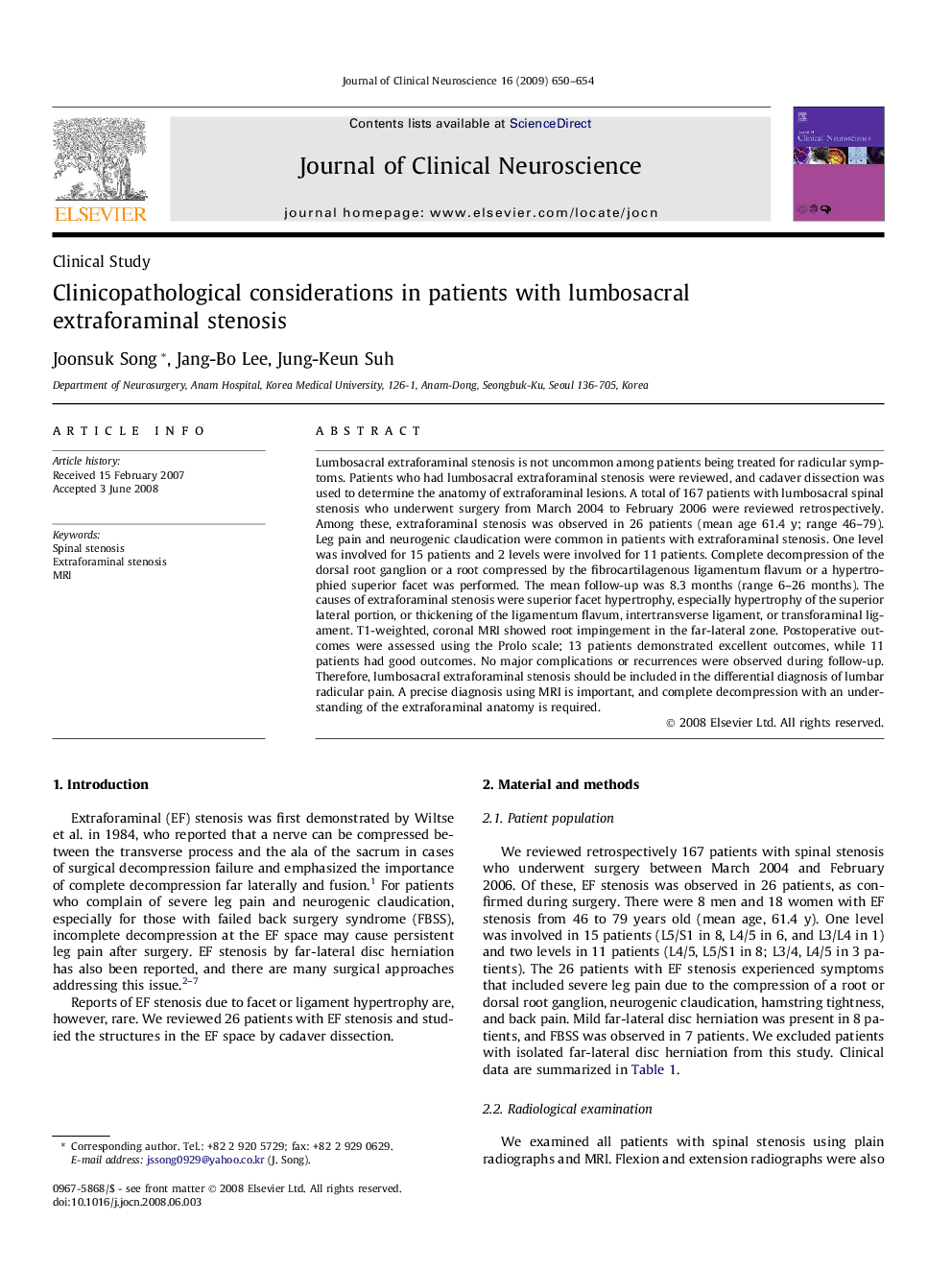| Article ID | Journal | Published Year | Pages | File Type |
|---|---|---|---|---|
| 3063454 | Journal of Clinical Neuroscience | 2009 | 5 Pages |
Lumbosacral extraforaminal stenosis is not uncommon among patients being treated for radicular symptoms. Patients who had lumbosacral extraforaminal stenosis were reviewed, and cadaver dissection was used to determine the anatomy of extraforaminal lesions. A total of 167 patients with lumbosacral spinal stenosis who underwent surgery from March 2004 to February 2006 were reviewed retrospectively. Among these, extraforaminal stenosis was observed in 26 patients (mean age 61.4 y; range 46–79). Leg pain and neurogenic claudication were common in patients with extraforaminal stenosis. One level was involved for 15 patients and 2 levels were involved for 11 patients. Complete decompression of the dorsal root ganglion or a root compressed by the fibrocartilagenous ligamentum flavum or a hypertrophied superior facet was performed. The mean follow-up was 8.3 months (range 6–26 months). The causes of extraforaminal stenosis were superior facet hypertrophy, especially hypertrophy of the superior lateral portion, or thickening of the ligamentum flavum, intertransverse ligament, or transforaminal ligament. T1-weighted, coronal MRI showed root impingement in the far-lateral zone. Postoperative outcomes were assessed using the Prolo scale; 13 patients demonstrated excellent outcomes, while 11 patients had good outcomes. No major complications or recurrences were observed during follow-up. Therefore, lumbosacral extraforaminal stenosis should be included in the differential diagnosis of lumbar radicular pain. A precise diagnosis using MRI is important, and complete decompression with an understanding of the extraforaminal anatomy is required.
